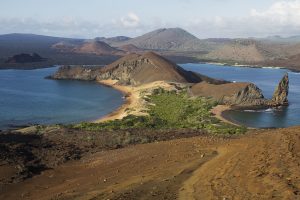Natural Sciences & Mathematics
View a list of departments in natural sciences & mathematics.

Sharing her Galapagos research
International Womenʼs Day is an opportunity to celebrate the social, professional and cultural achievements of women all over the world. Today Jill Stewart, deputy director of the UNC Center for Galapagos Studies, talks about her research.

Tanner Awards for Excellence in Undergraduate Teaching
Learn more about how one professor made his large classes feel small and another showed how topics studied in class are applied and used .

Carolina scientists earn prestigious Keck Award
UNC-Chapel Hill scientists Charles Carter, Qi Zhang, and Abigail Knight were awarded $1 million from the W.M. Keck Foundation to answer the age-old question: How did life on Earth begin?

Nature’s Compass
How can animals travel thousands of miles on a migratory path yet most people need to rely on GPS to get around town? UNC researcher Brian Taylor explores the ability of many animals to use the earth’s magnetic field for navigation in hopes of improving humanmade systems.

Chemist Jeffrey Dick awarded prestigious Sloan Research Fellowship
Jeffrey Dick, assistant professor of chemistry in the College of Arts & Sciences at the University of North Carolina at Chapel Hill, was recently named a 2021 Sloan Research Fellow.

Unearthing the Planet’s History
How did the planet become what it is today? UNC geochemist Xiao-Ming Liu collects samples of soil, rocks, and water from places like Hawaii to find the answer.

Out of Sight, Out of Mind
About 71 percent of Earth is water. Of that water, 96.5 percent is oceans. So why do most air pollution and emissions studies focus on terrestrial research? An interdisciplinary team of UNC researchers has combined their expertise to determine how much marine-source emissions impact human health and the earth.
